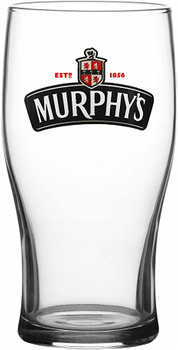Description
Near cylindrical, with a slight taper and wide-mouth. There are two standard sizes, the 16-ounce (US Tumbler - the pour man's pint glass and most common) or the 20-ounce Imperial (Nonic), which has a slight ridge towards the top, a grip of sorts and helps in stacking them. The 20-ounce version is preferred to accommodate more beer or beers with large crowning heads. A Becker is the German equivalent, tapering at the top.
Benefits: Cheap to make. Easy to store. Easy to drink out of.
Use with these Beer Styles:
- American Amber / Red Ale
- American Blonde Ale
- American Brown Ale
- American Cream Ale
- American Malt Liquor
- American Pale Ale (APA)
- American Porter
- American Stout
- Baltic Porter
- Black & Tan
- California Common / Steam Beer
- Chile Beer
- English Bitter
- English Brown Ale
- English Dark Mild Ale
- English Extra Special / Strong Bitter (ESB)
- English India Pale Ale (IPA)
- English Oatmeal Stout
- English Pale Ale
- English Pale Mild Ale
- English Porter
- English Stout
- English Sweet / Milk Stout
- European Dark Lager
- Finnish Sahti
- Foreign / Export Stout
- German Rauchbier
- German Roggenbier
- Irish Dry Stout
- Irish Red Ale
- Low Alcohol Beer
- New England IPA
- Robust Porter
- Russian Kvass
- Rye Beer
- Smoke Beer
- Smoke Porter
DIRECTIONS:
Never chill your glassware, and decline if served a frosted glass. Why? As the beer hits the frosted glass condensation will occur and dilute your beer, while at the same time alter the serving temperature.
Hand washing glasses is recommended as some dishwashers will leave residues on the glass. If you have a new dishwasher with a sanitation cycle, using that with no soap is a great option as well. Allow your glasses to air dry whenever possible. It is not recommended to hand dry because towels can leave lint which will affect head retention.
Ingredients
Note: Ingredients and labels may change without notice and translation and/or typographical errors are possible. Therefore consumers are advised to check the ingredient lists on the package for substances that might be incompatible with them BEFORE ingestion. The European Parliament directives and amendments pertaining to compulsory food labeling can vary depending on the item in question and producers are not always required to provide a detailed and complete listing of all ingredients. When in doubt contact the manufacturer before consuming this item.










